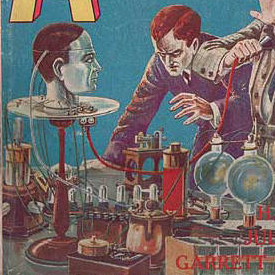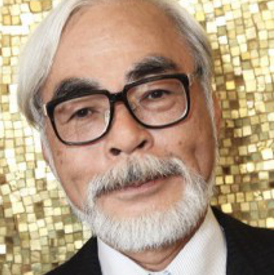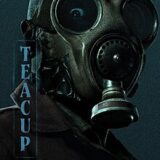Memory is a strange thing. We’ve learned through research (utilizing technologies that were unimaginable fifty years ago) that factual memories morph over time; in fact, every time we recall a particular memory, it changes.
My personal memories of Star Trek suffered the same fate. It wasn’t until talking to my mother recently that I was reminded of the fact that our entire family gathered together around the old cable-less television on this very day fifty years ago to watch the show’s first episode.
 I do remember that my first view of the ‘salt vampire’ in that opening episode (“The Man Trap”) terrified me. (Now I wonder why a creature that sucks salt from its victims through suction cup hands needs a mouth, let alone a predator’s needle teeth….).
I do remember that my first view of the ‘salt vampire’ in that opening episode (“The Man Trap”) terrified me. (Now I wonder why a creature that sucks salt from its victims through suction cup hands needs a mouth, let alone a predator’s needle teeth….).
Until that conversation with my mother (who would change family dinner time several years later to accommodate Trek re-run time), my first memory of Star Trek was sneaking down the stairs so I could surreptitiously watch over my father’s shoulder. That memory was accompanied by the belief that the show was on too late for my 8 year-old self to stay up for.
But probably not: I was allowed to stay up for Voyage to the Bottom of the Sea (airing at 7:30 on Mondays), occasionally The Man From Uncle (Tuesdays at 8:30), and Flipper (7:30 on Saturday), in 1964, so it’s more than likely that my bed time had advanced an hour or so by the time 1966 rolled around.
I’m beginning to suspect that my memory of watching from the stairs is the stronger of the two because it was related to punishment: I’d done X (or hadn’t done Y after the fifth time they’d told me to), so –  I can’t double check these memories: my father is gone now and my mother would not have witnessed my secret watching (yes, I was that good), but given the factual evidence of air times and dates, this new memory seems much more plausible.
I can’t double check these memories: my father is gone now and my mother would not have witnessed my secret watching (yes, I was that good), but given the factual evidence of air times and dates, this new memory seems much more plausible.
One fact I can check with a primary source is how utterly annoying my obsession with Star Trek was – to my younger brother. (“Yes, you were very annoying: no one was allowed to do or say anything that could interrupt the show – we ate dinner in silence, we only talked during the commercials – no matter how many times we’d all seen the same episode before.”)
What can one say to that except to admit that it’s all true? So much so that my parents resorted to suggesting alternatives. Somehow I managed to work street and ice hockey, bowling, karate school, after school activities and a handful of other television shows into the mandatory Trek scheduling. Doctor and dentist appointments were, I suspect, deliberately scheduled on top of Trek hour – but only for a short while.
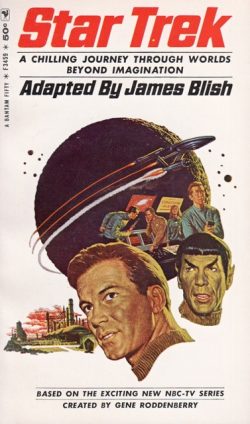
 I was obsessed: I picked up the AMT model kits of the Enterprise and Klingon D7. My friends and I used fishing line to suspend the D7 from a telephone line so we could photograph it against the sky; I picked up James Blish’s novelizations of the series and devoured them.
I was obsessed: I picked up the AMT model kits of the Enterprise and Klingon D7. My friends and I used fishing line to suspend the D7 from a telephone line so we could photograph it against the sky; I picked up James Blish’s novelizations of the series and devoured them.
But mostly I watched and memorized. The re-run schedule didn’t follow the original airing schedule. I’d still like to know who did that job and why my favorite episodes seemed to be the ones that got less air time: I must have seen “Squire of Gothos” ten times for every time “Mirror, Mirror” was aired; “The Gamesters of Triskelion” was also a frequent repeat, as were, seemingly, most of the episodes featuring scantily-clad alien females…hmmmm.
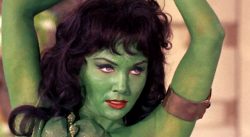 I fell in lust with Orion slave girls and – despite how politically incorrect it was, used to imagine what it might be like to be an Orion slave trader… (Later I would outline a TOS adventure for the Trek RPG that involved a Klingon plot to destroy the Federation; Orion slave girls were the primary tool of subversion. Of course, Spock being immune to their allure, it was the Enterprise crew that twigged to the plot and had to act to save everyone). The possibility of the existence of Orion slave boys never occurred to me. Of course, there had to be some, right?
I fell in lust with Orion slave girls and – despite how politically incorrect it was, used to imagine what it might be like to be an Orion slave trader… (Later I would outline a TOS adventure for the Trek RPG that involved a Klingon plot to destroy the Federation; Orion slave girls were the primary tool of subversion. Of course, Spock being immune to their allure, it was the Enterprise crew that twigged to the plot and had to act to save everyone). The possibility of the existence of Orion slave boys never occurred to me. Of course, there had to be some, right?
As I said, I memorized: ship blueprints, ship designations, alien empires, episode numbers and “the proper sequence”. In 1972, the first true Star Trek convention was held in NYC (a special panel at Star Trek: Mission New York commemorating that first event just took place a couple of days ago).
I didn’t manage to get to that one, but the following year found me bouncing around the Commodore hotel. The highlights I remember from that convention are:
the dealer’s room – I think there were about 100 vendors (seemed like a million) and I also think that every single one of them was selling B&W production stills from the show and buttons depicting various ships and characters. I picked up some stills (long since lost), a full set of the ship buttons (I’ve still got three) and, oddly enough, two posters of Amazing Stories covers (even back then someone was pirating the cover artwork from the pulps).
the film room – where, when we weren’t watching the ST blooper reel, we watched Flash Gordon serials
the art show – where, for the first time in my very young life I was exposed to a naked Vulcan, or rather, a naked Vulcan was exposed. It was a shower scene. I remember this distinctly for several reasons, but mostly because that level of sexuality associated with Star Trek was absolutely new to me. I remember wondering not only why would someone want to depict such a thing? but also how do they know (what he looks like naked)? Seriously, how did they know? Don’t give me that Pon Far or Spock is half human excuse: There’s any number of ways that Amanda and Sarek could have contrived to combine their DNA and most of them don’t involve the physical. For all we know, it’s Vulcan males who have the equivalent of a vagina. I only mention this to convey some level of the emotional shock I experienced upon seeing this image, surrounded by depictions of other alien races (there was quite a fetching portrait of an Andorian) and spaceships orbiting planets.
the party – somehow, I managed to hook up with a young woman working on the staff (only a few years older than my 14) who, apparently thought I was “neat” and “cute” (she was sadly mistaken on both counts); she took me to the private suite that the guests of honor were hiding out in. I got to meet Gene Roddenberry, Majel Barrett, Nichelle Nichols, GeorgeTakei, and Walter Koenig.
I was quite drunk at the time (yes, underage drinking) and I’d like to believe that my impromptu recreation of the blooper reel scene involving McCoy and Nurse Chapel while the Enterprise was under attack (I’ll not elaborate here) with the aforementioned femme fan, impressed everyone, though they probably excused it as an act of youthful exuberance (and drunkenness). (Sorry, dear lady, for having forgotten your name: if you recognize yourself, please feel free to chastise me.)
The highlight of that party though was what happened when I dutifully remembered to call my parents (“no later than ten!”). I was given permission to use the room phone, dialed, and then had this conversation with my father:
Me: “Yes, I’m having a great time. I’m at a party with Chekhov and Sulu and Uhura!”
Dad: “You’re at a party with a whore?”
Me: “No dad! Not a whore, Uhura! You know, the communications officer!”
I suspect that the mishearing was my fault. Because: alcohol. (I’ve since attempted to find out if Ms. Nichols remembers the incident so that I can apologize for my father, but to avail.)
the trivia questionnaire – Here’s where all that memorizing comes in. Every attendee got the trivia questions at registration (xeroxed: anyone got a pic or a copy?) and I aced it. Of course, I don’t remember all that much detail anymore, but at the time, doing so well on those trivia questions meant, at least to me, that I was a true Trekkie.
Yes, I know the fans have changed the preferred term to Trekker since those early days, but, so far as I’m concerned, if Gene Roddenberry and William Shatner can use the word Trekkie, its good enough for me.
And then it was over. My first Trek con (the second ever) had come and gone and there was nothing for it but to watch episodes every day for a year until we could do the whole thing all over again.
The moment I returned home, plans were set in concrete to attend the ’74 convention. No one, for no reason, would dare commit me to anything else on that weekend.
Once at the convention, I discovered that, yes, the magic does go away.
I did the obligatory tours of the dealer’s room (picked up a bunch of old pulps – I already had the production stills I wanted). Thought about getting an IDIC pendant and decided against it – I’m not a big one for jewelry.
I couldn’t find my “convention girl friend”, so no private parties with the cast and crew. The blooper reel was still funny – even on the nth iteration, but I have to confess, you really can only sit through all 40 Flash Gordon serial episodes so many times before you need to take a break.
I went to opening ceremonies and panels – don’t remember any of them – and soon found myself sitting in the lobby, wondering what to do next, when a commotion arose on the balcony one floor above.
It was enough to draw the attention of just about everyone in the lobby, that I remember. Apparently, two men (mid-30s?), both dressed as Captain Kirk (command gold shirts) and both armed with phaser water pistols, were having a fight.
Getting squirted with a water pistol back in those days was not an uncommon happening; rubber band guns, water pistols and bubble blowers were regular lobby features.
This incident was, however, a bit different. These two Kirk wannabees were having a fight over which of them was the real Captain Kirk, and they were serious. Maybe they staged it and did all too good a job, maybe it was a regular thing between them, maybe something behind the scenes caused them to escalate, neither I nor anyone else will probably ever know.
But I knew. It was the end of the wonder for me. Reality had intruded into a realm where it did not belong and was not welcome.
I never went to another Trek con and I must confess that when asked if Trek programming ought to be a regular thing at real science fiction conventions, my answer was a resounding no. (I switched allegiances the very same year. Traditional conventions are about the literature, including fanzines, and then about everything else SFnal; they are not about a focus on one single television show. Some of you may have heard of the enmity between Trekkies and Trufans; many, many trufans were Trekkies; what most of them objected to was the over-commercialization that we were seeing coming from the Trek side of things. These days, Trek fans are welcome just about everywhere, convention-wise, because the divide has been firmly established and we’re all friends now. But back then, there was some real pushback against Trek‘s perceived intrusion into the world of fandom.)
These days, I find myself with pretty much the same attitude about the shows that I had about the conventions. The first was an experience like no other, the rest, imitations with drama. Star Trek: The Original Series, is like no other. Neither TNG, nor DS9, nor Voyager nor Enterprise, nor the films or even the NuTrek films, can hold a candle to that once-in-an-epoch coming together of creators, writers, actors, themes and historical context. When asked to work his magic a second time (for TNG) Gene “The Great Bird of the Galaxy” Roddenberry reportedly stated that you can’t catch lightning in a bottle twice. (Nevertheless, he tried and succeeded at least insofar as exposing another generation to Star Trek. It boggles my mind though, to know that there are people out there who truly believe that TNG is the Best. Trek Ever. Fickle fans. If they’d been born a baby boomer, I’m pretty sure they’d be agreeing with me.)
I think he was right about that bottled lightning thing. I’ve tried all of the series (the animated episodes come the closest), given each multiple shots, but they just don’t do it for me (and the less said about superhero NuTrek the better). Oh sure, I certainly like many of the characters in other series; Sisko sure does give Kirk a run for the title of Best Captain; Data is at least as enigmatic and intriguing as Spock was, though in different ways; Worf set the tone for all crinkle-headed Klingons (though I must admit that I’m still partial to the original retconned explanation for why TOS Klingons look so much different from TNG Klingons: TOS Klingons were half-breeds, living on the fringes of the empire as a buffer zone), and Archer coulda-woulda-shoulda been Kirk; Janeway though – I never liked her. Oh, she was certainly capable as a commander, and I think it a wise move to have given the chair to a woman in at least one series, but on the other hand, her “command voice” came across as affected to me and I’m totally convinced she ought to have been court-martialled for putting up with so much BS from her crew. Odo – didn’t do it for me, Bajorans deserve to have been conquered by Cardassians, and so it goes.
Undoubtedly, a lot has to do with the age of exposure. When it first aired in 1966, I wasn’t quite 8 years old. When it went into syndication, I believe I was 12. In between those two events, people from the Earth walked upon the face of the Moon; Stanley Kubrick and Arthur C. Clarke SHOWED us what the next few decades was going to bring, the war in Viet Nam ended and there were serious glimmers of hope that the cold war would not end with a bang.
For someone getting steeped in Heinlein, Asimov, Clarke, Le Guin, Bradley, Brackett, Russell, Farmer, Chandler, Merrill, McCaffrey, Moore, Kornbluth, Pohl, Niven, et al, these were heady times. For me, Star Trek: TOS wasn’t just one of the best science fiction shows ever put on television, it was an actual glimpse into a future that made serious claims on becoming reality. We’d colonize the Moon, go on to Mars, the Moons of Jupiter and Saturn (all while terraforming Venus and mining Mercury, of course) and somewhere along the way someone (probably NASA) would perfect a Warp drive. Then – BAM – Star Trek.
I might even live long enough to see most of it.
Star Trek was produced in the Age of Believability. Star Trek: TNG, the movies, the other series were all produced in the post-Believability Age. Unlike TOS, which came to us during an era of ascension, an age in which we started to believe that humanity could do almost anything, the other series are products of an age in decline. By the time TNG hit the screens, we’d learned that a Star Trek future (in space) was, at best, a very distant future and at worst, something that might never happen at all.
I can’t help but believe that some of my disconnect from the other Trek shows is a sensitivity to the perception of these different ages expressed through the shows. Star Trek: TOS was science fiction likely to become reality. All the rest are mere science fiction. I also can’t help but believe that the zeitgeist shifted between TOS and TNG et al, and that the shift affected the shows themselves, the writing, the themes, etc. Of course they did. Science Fiction is, quite frequently, a reflection of its times.
Fortunately, there is nostalgia. And reminisce.
Fortunately, some of those technologies depicted in the first series became reality, and I can now watch Star Trek wherever I am, whenever I want, without spoiling anyone else’s dinner.



